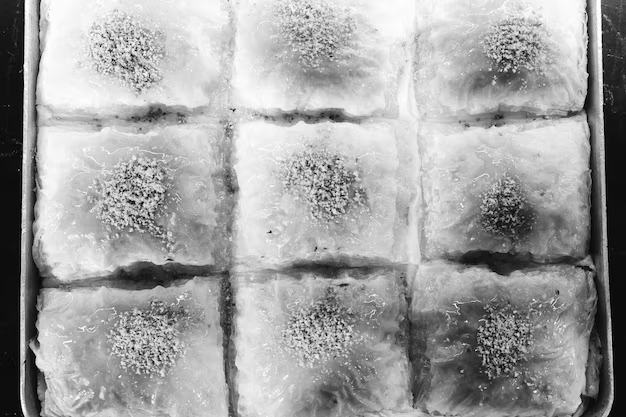Mastering the Art of Defrosting: A Step-by-Step Guide to Defrost Your Refrigerator
Let's face it, a refrigerator that's slowly turning into a mini iceberg can be a real headache. Frost buildup not only takes up storage space but can also cause your appliance to work harder, leading to higher energy bills. The good news? Defrosting a refrigerator is a straightforward process, and we're here to walk you through it like a pro.
Understanding Frost and Why It Builds Up
Frost buildup in refrigerators, particularly in older models, occurs when warm, humid air seeps in and comes into contact with the cold air inside. When this happens, moisture from the air freezes, forming a layer of frost. Over time, this frost can accumulate and affect the functionality and efficiency of your fridge.
Why Defrosting Matters
- Efficiency: A frosted refrigerator works overtime to maintain the desired temperature, consuming more energy in the process.
- Storage Space: Frost can hog precious space, reducing the actual storage capacity of your refrigerator.
- Longevity: Regular defrosting can prolong the lifespan of your appliance by ensuring it operates smoothly without unnecessary strain.
Prep Steps Before the Big Defrost
Before embarking on your defrosting journey, prepare your refrigerator and surroundings to ensure safety and efficiency.
1. Plan Ahead
Defrosting can take a few hours, so choose a time that doesn’t coincide with major meal preps or when you’ll need your fridge most.
2. Clear Out Contents
Remove all food items and store them in a cooler or another refrigerator. This not only speeds up the defrosting process but also safeguards your perishables.
3. Unplug the Fridge
Safety first! Always unplug the appliance before starting the defrosting process.
4. Lay Down Towels
Place towels around the base to soak up any water runoff. This will protect your floor and help in cleaning up later.
How to Defrost: Step-by-Step Guide
Now that you’re ready, let’s dive into the process of defrosting your refrigerator:
Step 1: Remove Shelves and Drawers
Carefully take out all removable parts such as shelves and drawers. This will make it easier to clean and will ensure they don’t get damaged during defrosting.
Step 2: Allow the Ice to Melt
The most straightforward method is simply to leave the door open and allow the ice to slowly melt. If you’re in a rush, place a large bowl of hot water inside the refrigerator. The steam will help accelerate the melting process.
Note: Avoid using sharp tools to chip away the ice. This could damage the interior of your fridge.
Step 3: Clean Both Interiors
Once all the ice has melted, mix a solution of baking soda and warm water, and use it to wipe down all surfaces. This will help eliminate any lingering odors and ensure a pristine interior.
Step 4: Dry Thoroughly
Ensure the interior is completely dry before replacing all the shelves, drawers, and food items. Moisture left behind could lead to more frost buildup.
Post-Defrost Care and Maintenance
Reorganize Efficiently
Place food items back in organized sections to promote better airflow and ensure everything cools evenly.
Check the Seals
Ensure the door seals are tight to prevent warm air from seeping in, which can lead to future frost issues.
Regular Maintenance Tips
- Monitor Temperature: Keep an eye on the thermostat settings to ensure optimal fridge temperature.
- Regular Checks: Aim for defrosting whenever frost exceeds a quarter-inch. Regular cleaning can help spot and address new problems early.
Extra Tips for a Frost-Free Experience
Embrace the No-Frost Technology
If you have a newer model with built-in 'frost-free' technology, it’s still beneficial to understand these basics. Regular maintenance and cleaning routines contribute to better performance in any case.
Humidity Control Matters
Limit the number of times you open the fridge, especially during humid weather, as this can contribute to increased frost formation.
Efficient Appliance Loading
Avoid overloading the fridge. Overpacking can obstruct airflow, leading to uneven cooling and potential frost buildup.
Quick Summary for Easy Defrosting 🌟
Here's a quick skim guide for handling defrosting like a pro:
- 🕒 Plan Timing: Allocate ample time for the job.
- 🍽️ Empty Contents: Secure perishables in a cold alternative.
- 🔌 Unplug: Always unplug before proceeding.
- 🎛️ Remove Parts: Shelves and drawers should be carefully extracted.
- 💦 Melt Ice: Use hot water or simply patience with open doors.
- 🧼 Clean: Wipe all surfaces with a baking soda solution.
- ☑️ Inspect: Ensure seals and internal elements are intact.
- 🚫 Avoid Overload: Maintain organization for better airflow.
Defrosting may seem like an inconvenience, but approaching it systematically can transform it into a manageable and rewarding task. Not only will you extend the life of your refrigerator, but you’ll also keep your food fresher. A little maintenance today means fewer headaches tomorrow.
By following this guide, you embark on the path to becoming the master of your kitchen's frost issues. Here's to clear shelves, seamless cooling, and the satisfaction of knowing you're saving energy and extending the life of your trusty appliance. Happy defrosting!
